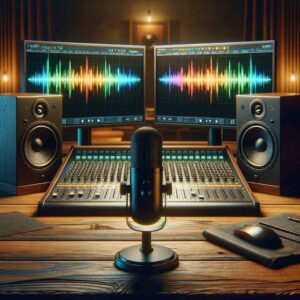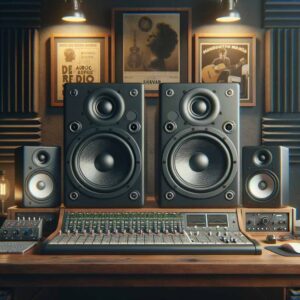Are you confused about the difference between an audio mixer and audio interface?
Don’t worry, you’re not alone!
Mixers can be fun to use but may not be necessary for many home recording situations.
Conversely, an audio interface will limit your ability to adjust your audio in real time during a live performance.
So, which one is better?
Mixers are better when you want complete control over your audio before it enters your computer or speakers – for instance, a live performance, podcast, etc.
However, audio interfaces are ideal for home studio music recording.
You can record your mic or instrument through an audio interface and use a virtual mixer in your DAW to fine-tune your audio in post-production.
Still not sure which one to use?
In this article, we’ll explain the differences between a mixer and an audio interface to help you decide between the two.
Whether you’re a podcaster, musician, or live sound engineer, this article will help you make an informed decision about which equipment to invest in.
Audio Interface vs Audio Mixer: What’s the Difference
Audio Interface
An audio interface connects microphones, instruments, and other audio equipment to your computer.
But why not just connect these devices to your computer directly?
Well, audio interfaces have inputs and outputs that are compatible with these audio devices.
They also have higher-quality audio converters than a computer’s built-in sound card.
As a result, they offer superior sound quality and lower latency (less delay).
It’s common for a mixer to have a built-in audio interface.
You can connect this type of mixer directly to your computer via USB.
But the difference between a standalone interface and a mixer is that a mixer gives you more control over your audio before it enters your computer.
Audio Mixer
With a mixer, you can adjust levels, shape frequencies, control panning, add effects, etc.
If you’ve ever worked in DAW you’ve already used a mixer and may have not realized it.
Every DAW has a virtual mixer.
A physical mixer gives you a similar amount of control over your audio signals as a virtual mixer.
Here are some standard features you’ll find on a mixer:
Input Channels
These are individual channels on a mixer where you can connect microphones, playback devices, instruments, and effects processors.
Each input channel has knobs or faders that let you adjust the level of each input source.
They also have other parameters that let you change the tonal qualities of your audio signals.
Level Faders/Knobs
Level faders or knobs are controls that let you adjust the volume of each channel.
Equalizer (EQ)
EQ knobs that let you boost or cut high, mid, and low-frequency ranges.
Some mixers also allow you to adjust hi-mid and low-mid ranges.
The Rockville RPM870 even has a 7-band master EQ that gives you more control over your audio in real-time.
Panning
Pan knobs allow you to adjust the stereo placement of each channel in your mix – from hard left to hard right or anywhere in between.
Aux Sends
Aux sends are 1/4-inch outputs that send your input signals to an effects processor such as a reverb, compression, or delay device.
FX
This knob lets you apply and adjust reverb, delay, chorus, and other built-in effects
Should You Use a Mixer or an Audio Interface?
Should you use a mixer or audio interface?
If you’re a live sound engineer or need to mix multiple audio sources in real time, then a mixer is likely the better choice.
On the other hand, if you’re a home studio musician, podcaster, or producer who primarily works with software-based DAWs, then we suggest using an audio interface.
Interfaces are designed to connect your instruments or microphones to your computer and provide high-quality recording and playback.
They’re compact, portable, and easy to use, making them ideal for mobile recording or small studio spaces.
Many interfaces also come with features like low-latency monitoring, analog hardware emulations, and onboard DSP effects processing that help streamline your recording and mixing workflow.
Conversely, mixers give you more of your audio in real-time.
You can adjust frequencies, panning, and levels before your audio reaches your computer or speakers.
This ability is useful for live scenarios.
Ultimately, the choice between using a mixer or an audio interface comes down to your specific needs and preferences.
If you need to mix multiple audio sources in real time, a mixer is likely the better choice.
But, if you primarily work with DAWs and want to capture high-quality recordings with minimal equipment, an audio interface is the best option.
Takeaway: Audio Interface vs Audio Mixer
So, what’s the difference between an audio interface and a mixer?
Which one should you choose?
An interface allows you to record signals from your microphone and instruments.
It converts signals from these devices into a format that your computer can process.
Many mixers have a built-in audio interface.
However, they’re different because they give you more control over your audio in real-time.
You can adjust levels, add an EQ, and add effects to your input signals before they reach your computer.
An audio interface is likely the best choice if you need to record high-quality audio into your computer.
However, a physical mixer is more effective if you want to adjust multiple audio signal levels for a live performance or podcast.








